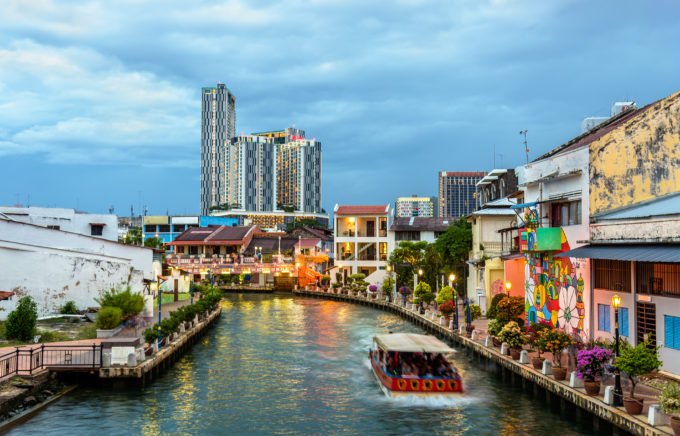
Long Live This Sordid, Boozy Piece of Malacca History

Long Live This Sordid, Boozy Piece of Malacca History
Samsu in Malacca
We had just crossed the Gateway to Hell onto Java Lane, a historic street in the Malaysian state of Malacca. This alleyway, once lined with brothels, opium dens, and bars (hence the nickname for its pedestrian entrance over the Malacca River) has only a few remnants left from its days as a boulevard of debauchery—such as Sin Hiap Hin, a generations-old liquor shop whose original sign, in Chinese and English, caught my eye immediately.
I was on one of my biennial trips back to the motherland to reconnect with family and satisfy the hawker-food cravings that build up when I’m away, and I usually make a small detour to somewhere nearby before heading back to California.
I beelined towards the enigmatic bottles neatly stacked floor to ceiling. They reminded me of the Chinese apothecaries to which my mother would drag us at the first sign of any ailments during our childhood in Penang. Seeing me approach, the shop owner beckoned warmly and asked if I wanted to taste some Malaccan rice wine.
I dove right into a generous pour of samsu, a clear liquor distilled locally from fermented rice mash, as shop owner Lian Suan regaled me with tales about the watering hole that’s been in her family for four generations. The high alcohol volume cleared my nostrils immediately, but smoothed out to a subtle sweetness.
[Read: What to know before you go to Penang]
During its heyday as a thriving port on the spice route, thanks to the Strait of Malacca’s strategic position between the Indian and Pacific Oceans, longshoremen would frequent Sin Hiap Hin and swig samsu for its low cost and high kick, between unloading goods from vessels carrying nutmeg and black pepper. Locals also used samsu as a cure-all ointment and Buddhist prayer offering. I set the glass back down on the hardened timber counter, adding yet another layer to the faint pattern of overlapping water rings embedded from years of repetition. I imagined the rowdy revelry that would have happened just a few decades ago in the very spot I was sitting at.
Nowadays, Sin Hiap Hin closes before dusk, and is frequented by a mix of locals and expats looking for a slice of old Malacca as conglomerate developments rapidly engulf the neighborhood. A handful of families continue to live in their ancestral homes and ply their trade on Java Lane, while enterprising youth have started serving gourmet coffee from Marzocco machines out of windows with trendy neon graphics.
After a handful of generous tastings, I felt my head getting lighter and my stomach hollower. I paid, making a wish that this would not be my last visit here, and bid a reluctant goodbye to Lian Suan. As Malacca becomes a visitor destination, I hope desperately that this sordid piece of its history will not be wiped clean.
Sin Hiap Hin
5 Java Lane, Melaka
Malaysia